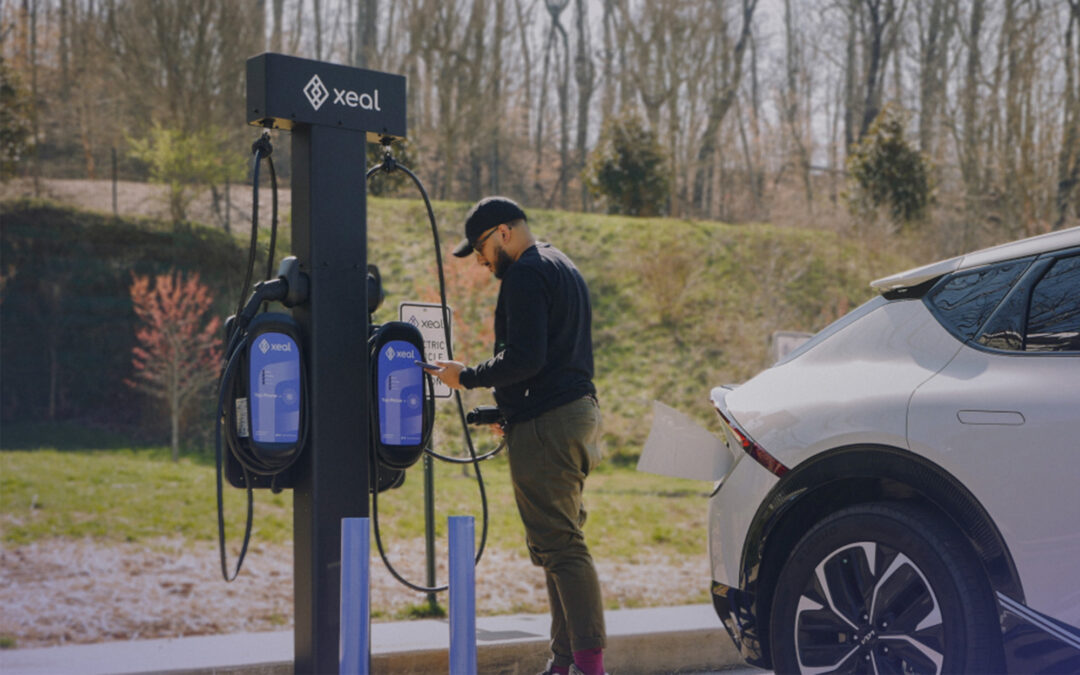As EVs become more popular, the demand for commercial charging infrastructure is on the rise. Installing EV chargers can be a lucrative investment for businesses, but it also comes with its own set of challenges. Whether you’re a business owner, property manager, or facility engineer, it’s essential to understand the various hurdles in the EV charger installation process. In this blog, we’ll discuss six key challenges and how addressing them can help you plan and execute a successful EV charging infrastructure project.
1. Electrical System Capacity Concerns
Many existing electrical infrastructures are not equipped to handle the additional load that EV chargers require. If your electrical system can’t support the energy needs of multiple charging stations, upgrades will be necessary. These upgrades can be costly and time-consuming, requiring permits and potentially significant downtime during installation.
Factors to Consider
- Electrical Load Capacity: Does your current system have the power to handle multiple EV chargers? Installing high-capacity charging stations can significantly increase the demand on your grid.
- Upgrade Requirements: Will you need to upgrade transformers, circuit breakers, or wiring? Consult with an electrician or engineer to ensure your system can handle the increased load.
- Permits and Regulations: Electrical upgrades often require permits and inspections from local authorities, adding time and complexity to the project.
2. Location Challenges for EV Charger Installation
You’ll need to consider the convenience for users, as well as the practicality of installation. Chargers should be easily accessible, not only for everyday drivers but also for people with disabilities. Space availability is important—installing chargers in areas that don’t disrupt traffic flow is ideal.
Key Considerations for Location
- Visibility: EV chargers should be in easily visible areas to attract EV drivers. High-traffic areas, such as parking lots near entrances, can help make sure the stations are used.
- Proximity to Electrical Infrastructure: Positioning chargers close to existing electrical systems can reduce installation costs, as it minimizes the need for extensive trenching or cabling.
- Accessibility for All Users: Make sure chargers are placed in locations that comply with ADA (Americans with Disabilities Act) requirements, allowing people with disabilities to easily access and use the stations.
- Weather Protection: Consider adding canopies or shelters to protect the chargers from harsh weather conditions, which can reduce maintenance costs and extend their lifespan.
3. The Associated Costs of EV Charger Installation
Installing EV chargers is a big financial investment that goes beyond just purchasing the equipment. Understanding the full range of costs involved can help businesses better budget for the project.
Breakdown of Costs
- Equipment Costs: The type and number of chargers you choose will heavily influence costs. Fast chargers, such as Level 3 DC fast chargers, are much more expensive than Level 2 chargers.
- Labor and Installation: Hiring electricians and contractors to install the chargers, upgrade electrical systems, and manage site preparation is another significant cost. Labor costs can vary depending on the complexity of the installation and local regulations.
- Site Preparation: If extensive trenching, repaving, or upgrades to the electrical system are required, site preparation costs can add up quickly. Factors like proximity to the electrical grid and existing infrastructure will influence these costs.
- Permitting and Inspection: Depending on local regulations, obtaining the necessary permits and scheduling inspections can add time and money to your project.
Long-Term Costs
In addition to upfront costs, ongoing expenses such as maintenance, energy consumption, and software fees for networked charging stations must be considered.
Eliminate all the concerns and hassle of an EV charger installation project by partnering with Lonestar Integrated Solutions to handle all stages of the process.
4. Accessibility Challenges for All Users
Accessibility is not just a legal requirement—it’s also a key aspect of making EV chargers available to as many users as possible. ADA compliance involves making sure chargers are easy to access for people with disabilities. This includes proper signage, space allocation, and keeping the controls within reach.
User-Friendly Design
Even for non-disabled users, EV chargers must be intuitive and easy to use. Complicated or poorly designed interfaces can frustrate users and lead to underutilization. Consider the following:
- Clear Signage: Label the stations clearly, with instructions that are easy to follow.
- Mobile Integration: Many EV drivers prefer to use apps to find charging stations, monitor charging progress, and pay for usage. Make sure the chargers you install support app integration.
- Lighting and Safety: Well-lit charging stations can make the area feel safer and more inviting, especially at night.
5. Securing Charging Stations Against Theft and Vandalism
With any outdoor installation, theft and vandalism are concerns. EV chargers are expensive pieces of equipment, and taking the necessary precautions to protect them is essential. Installing physical barriers, such as bollards, can help prevent damage from vehicles. You may also consider security cameras and fencing around the chargers.
Regular Maintenance
Routine inspections help stations remain in good working condition and address any issues, such as damaged components or tampered wiring.
- Surveillance Systems: Installing cameras can deter vandalism and theft, offering a visual record in case of an incident.
- Physical Barriers: Use bollards or fencing to protect chargers from accidental vehicle collisions or intentional damage.
- Lockable Chargers: Some chargers come with lockable connectors to prevent unauthorized use.
6. Planning for Future Growth and Technological Advancements
As EV adoption grows, it’s essential to future-proof your charging infrastructure. Installing a scalable system allows for easy expansion as more EV drivers begin using your facility. Consider modular systems that can be expanded without overhauling the entire installation.
Staying Ahead of the Curve
When planning your installation, consider selecting upgradable systems through software updates or by swapping out components.
- Modular Chargers: Opt for modular systems that allow for easy expansion as demand increases.
- Smart Charging Capabilities: Many modern chargers feature smart capabilities, such as load balancing and remote monitoring, which can help improve efficiency and reduce costs over time.
- Energy Management Systems: Implementing energy management solutions can help balance the demand on your electrical grid, so you’re ready to handle future growth.
Plan Out an Easy EV Charger Installation Process By Partnering With the Experts at Lonestar Integrated Solutions
Complete a smooth EV charger installation process with the experts at Lonestar guiding you every step of the way. We help evaluate your electrical systems, choose the best locations, and connect you with trusted installers. With our expertise, you’ll have secure, accessible, and future-ready charging stations tailored to your business needs!

